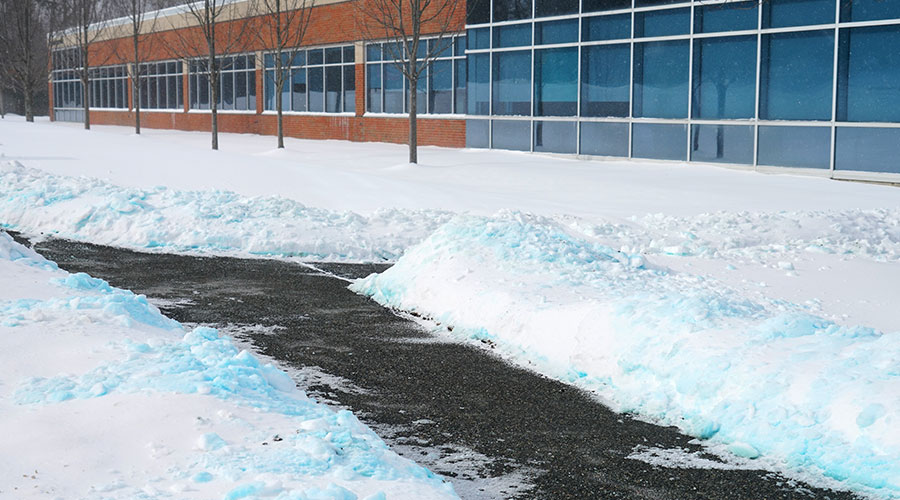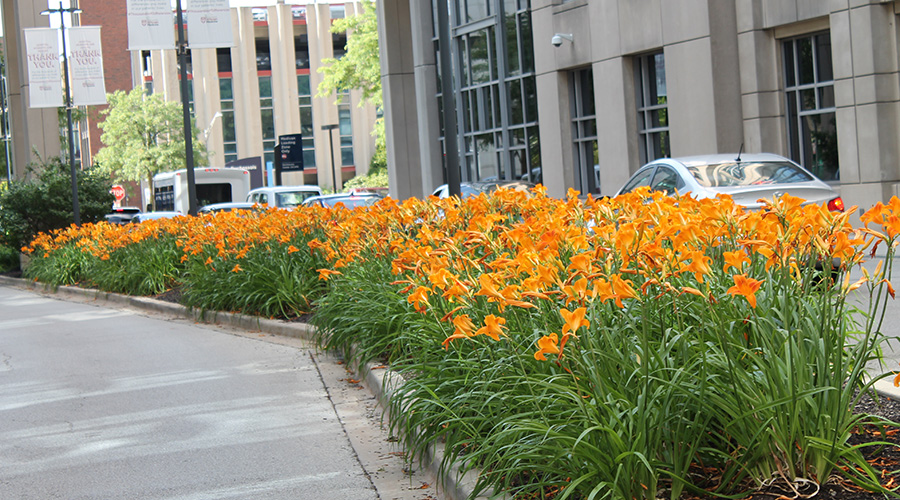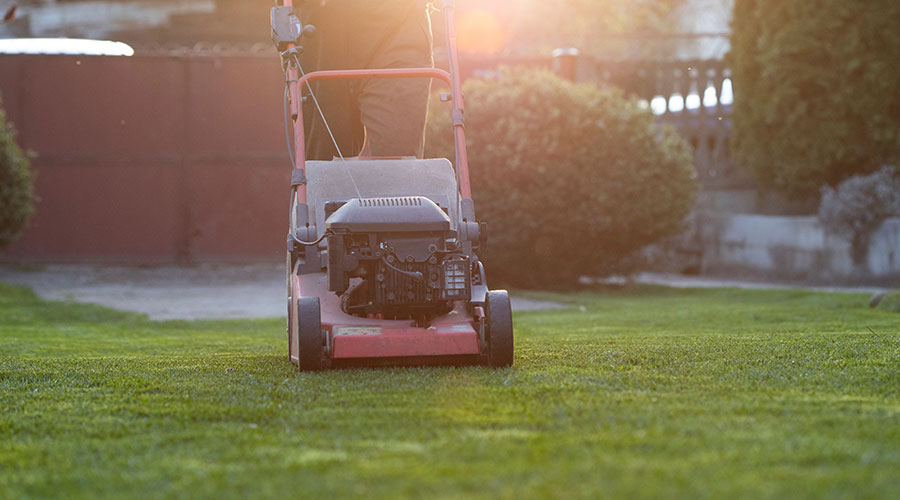Planting the Green Seed
Grounds managers use certification programs as baseline for incorporating sustainable measures into their landscapes
As environmental concerns mount and gas prices rise, sustainability is becoming an even more critical issue for grounds managers in commercial and institutional facilities. From equipment selection to daily activities and landscape design, managers are under growing pressure to conserve resources and reduce the effect grounds departments have on the environment.
A lack of sustainable landscape guidelines only magnifies the challenge for grounds departments trying to make their landscapes more environmentally friendly. But organizations like the U.S. Green Building Council (USGBC) and its Leadership in Energy and Environmental Design (LEED) rating system provide a framework for managers working toward sustainable grounds operations.
Guidelines and Standards
Most grounds managers would welcome a road map for sustainable maintenance practices, but a lack of widely accepted guidelines exists for grounds maintenance. For example, the USGBC has several LEED credits related to grounds and landscaping, but the rating system does not fully encompass the broad responsibilities of most grounds operations.
The Sustainable Sites Initiative, formed within the last three years, is a coalition of diverse stakeholder organizations, including the Professional Grounds Management Society, that develops guidelines and standards for landscape sustainability. The guidelines and standards are designed to supplement existing green building and landscape guidelines and become a standalone tool for site sustainability. The USGBC is a stakeholder in the initiative and anticipates incorporating these guidelines and standards into future versions of LEED. While the guidelines produced by the Sustainable Sites Initiative could become the standard for sustainable grounds operations, managers still must form their own principles until the initiative’s standards and guidelines are released in spring 2009 and its rating system released in spring 2011.
While the research and application of sustainable maintenance practices continue to evolve, managers are basing their decisions on sustainable principles, looking at best practices incorporated at other facilities and adjusting them for their own specific site.
“We ask, ‘Is this the best practice for the environment, our customers, and our landscapes?’” says Tom Flood, superintendent of landscaping and grounds for Elon (N.C.) University. “We try hard to balance these three: meeting our customers’ expectations, maintaining a healthy landscape, and being environmentally sensitive.”
The University of California-Davis grounds department works with a campus landscape sustainability committee to make decisions on green practices. The groups base their decisions on case studies from other facilities, as well as available guidelines, says Cary Avery, CGM, UC-Davis’ landscape superintendent.
Developing a Plan
Sustainable grounds maintenance starts with a landscaping plan featuring drought-tolerant plants that reduce the need for irrigation. It also is critical that those responsible for maintaining the landscape consult with the designer to establish the true costs for resources needed to maintain the site. Plans that employ or protect native or adapted vegetation also can earn additional LEED credits.
Plant selection is a critical part of an integrated pesticide management program as well, and proper plant maintenance is equally important, Avery says. Good, sound plant care — not neglecting water or nutrient needs and natural pruning, as opposed to hedging — helps maintain healthier plants, he says. “We only treat with pesticides if we absolutely need to.”
Flood echoes these comments.
“On campus, we try to have a higher tolerance level for a few weeds than on the athletic fields,” he says. “I have an enormous overseeding program in order to thicken turf and compete with weeds, rather than a heavier reliance on fertilizer and herbicide.”
Along with specifying drought-tolerant plants, organizations can achieve LEED credits for sites that reduce heat-island effects, specifically those created by hardscapes. Managers can earn these credits by minimizing hardscapes, providing shade for hardscapes, or using high-reflectance materials.
Recycling the materials used in hardscapes also contributes to sustainability efforts. UC-Davis is recycling asphalt and using it as a road base by pulverizing it down to a Class 2 specification. Rock that would have gone to a landfill ends up as base and materials in campus projects.
Water Wise
The last couple of years have illustrated the importance of water conservation, regardless of location. Evapotranspiration monitoring and using a weather station that is part of a central control irrigation system and adjusts to evapotranspiration daily has been helpful in conserving water, Avery says.
Managing stormwater runoff also coincides with water conservation. A stormwater-management plan that captures and treats runoff through the reduction of impervious cover and increases onsite filtration can garner LEED credits. For example, built ponds that collect stormwater runoff supply Elon’s irrigation systems.
“This improves the final water quality of what does reach the natural stream system, eliminates our dependence on potable water, and cleans and returns stormwater to the groundwater system,” Flood says.
Erosion control also is important in helping with stormwater contamination and prevention, Avery says.
“We use all our green waste from campus to mulch everything we can on campus,” he says. “Mulch is used not only in plant beds but also wherever soil might be exposed to erosion. Turf is also great for erosion control — something to consider with the push towards turf reduction.”
Focus on Equipment
When looking at day-to-day maintenance operations, having the right equipment — including mowers, tractors, and utility vehicles — also contributes to a grounds department’s efforts to reduce its impact on the environment.
“If our customers and community object to what we use, even based upon the noise or emissions pollution, then it is not sustainable to me,” Flood says, adding that Elon is moving to a fleet consisting solely of alternative-fuel vehicles.
“This includes electric as well as bio-diesel vehicles,” he says. “We have converted all our diesel vehicles to B20 bio-diesel and have not had a single problem with the equipment.”
UC-Davis is using similar strategies by purchasing electric carts to replace trucks used for maintenance on campus. The UC-Davis grounds department weighs cost versus reliability when specifying alternative-fuel products, Avery says. Avery was surprised at the blowing power and reduced noise levels from recently purchased, low-emission engine blowers.
“I don’t know why they weren’t available sooner,” he says.
But manufacturers still have to address grounds departments’ environmental concerns related to equipment specification, Flood says.
“Equipment manufacturers need to better address the sustainability issues involved in two- and four-cycle equipment,” he says. “From issues surrounding emissions and noise pollutions to rising fuel prices, these products are either being banned or becoming cost prohibitive to operate.”
Many large commercial and institutional facilities or their surrounding communities are banning the use of various pollution-emitting products, such as gas-powered blowers, and instead using brooms and rakes. But those changes can increase the amount of time and manpower necessary to finish a job quickly and efficiently, which also plays into the specification process.
Sustainability Education
The push for sustainability in grounds departments is long overdue, but to succeed, grounds professionals will educate facility administrators about the end product, says Thomas Shaner, executive director of PGMS.
“Everyone supports environmentally friendly practices and policies up until the point it affects them,” he says.
Many facility decision makers are pressuring grounds managers to employ more sustainable operations, but might not realize a landscape featuring drought-tolerant plants, little or no irrigation, and a reduction in fertilizers and herbicides will require an increase in manpower and budgets. It also will look different from traditional landscapes, Shaner says.
Keeping up to date with developments in the Sustainable Sites Initiative and LEED, as well as seeking out educational opportunities on topics related to sustainability, are musts for grounds managers, Shaner says. Those activities will ensure managers have the knowledge to properly educate their organizations’ decision makers.
“Sustainability is not a fad; it’s here to stay,” Shaner says. “We’ve been pushing environmentally friendly practices for several years. Recent developments have just heightened awareness. Unfortunately, some facility and grounds managers are still resistant. They don’t realize knowledge in this area is going to separate those that advance from those that don’t.” •
This article was provided by the Professional Grounds Management Society.
SPOTLIGHT: PGMS
The Professional Grounds Management Society (PGMS) is an individual membership society of grounds professionals advancing the grounds management profession through education and professional development.
Most PGMS members are institutional grounds managers who work for organizations such as colleges and universities, municipalities, park and recreation facilities, office parks, and hotels.
Among its activities, PGMS has become a stakeholder group in the Sustainable Sites Initiative and has revamped the curriculum of its School of Grounds Management to focus on sustainable practices. Seminars explore specific aspects of sustainable landscapes, including green-roof maintenance, new concepts in irrigation water management, and proper maintenance of perennials and shrubs.
For more information, visit www.pgms.org.
|
Related Topics:











